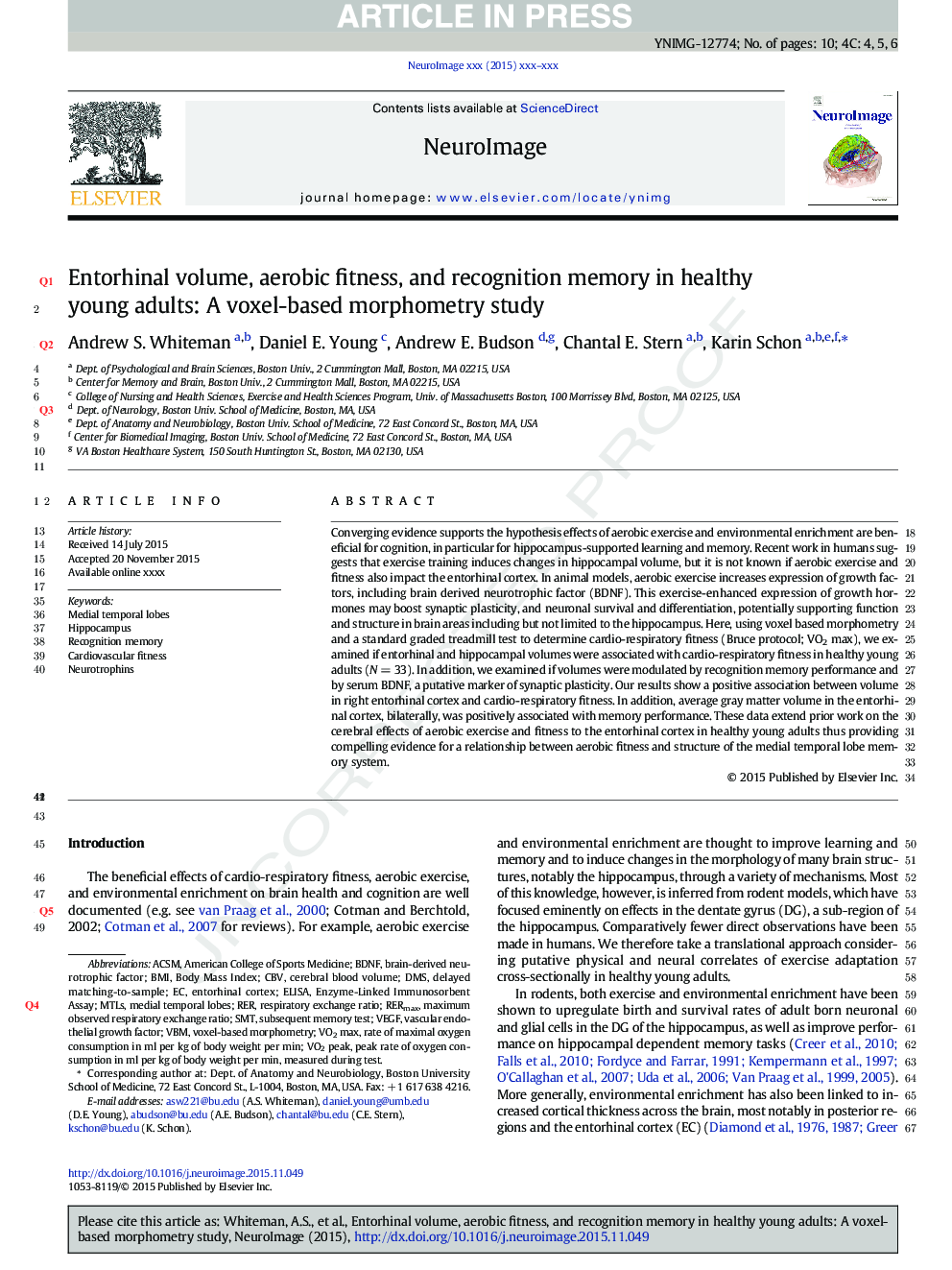| Article ID | Journal | Published Year | Pages | File Type |
|---|---|---|---|---|
| 6023916 | NeuroImage | 2016 | 10 Pages |
Abstract
Converging evidence supports the hypothesis effects of aerobic exercise and environmental enrichment are beneficial for cognition, in particular for hippocampus-supported learning and memory. Recent work in humans suggests that exercise training induces changes in hippocampal volume, but it is not known if aerobic exercise and fitness also impact the entorhinal cortex. In animal models, aerobic exercise increases expression of growth factors, including brain derived neurotrophic factor (BDNF). This exercise-enhanced expression of growth hormones may boost synaptic plasticity, and neuronal survival and differentiation, potentially supporting function and structure in brain areas including but not limited to the hippocampus. Here, using voxel based morphometry and a standard graded treadmill test to determine cardio-respiratory fitness (Bruce protocol; ·VO2 max), we examined if entorhinal and hippocampal volumes were associated with cardio-respiratory fitness in healthy young adults (N = 33). In addition, we examined if volumes were modulated by recognition memory performance and by serum BDNF, a putative marker of synaptic plasticity. Our results show a positive association between volume in right entorhinal cortex and cardio-respiratory fitness. In addition, average gray matter volume in the entorhinal cortex, bilaterally, was positively associated with memory performance. These data extend prior work on the cerebral effects of aerobic exercise and fitness to the entorhinal cortex in healthy young adults thus providing compelling evidence for a relationship between aerobic fitness and structure of the medial temporal lobe memory system.
Keywords
RERDMSACSMCBVVBMSMTBDNFcardiovascular fitnessdelayed matching-to-sampleELISAEnzyme-linked immunosorbent assayRecognition memoryCerebral blood volumebody mass indexBMIVascular endothelial growth factorVascular Endothelial Growth Factor (VEGF)Brain-derived neurotrophic factorEntorhinal cortexmedial temporal lobesvoxel-based morphometryRespiratory exchange ratioNeurotrophinsHippocampusAmerican College of Sports Medicine
Related Topics
Life Sciences
Neuroscience
Cognitive Neuroscience
Authors
Andrew S. Whiteman, Daniel E. Young, Andrew E. Budson, Chantal E. Stern, Karin Schon,
